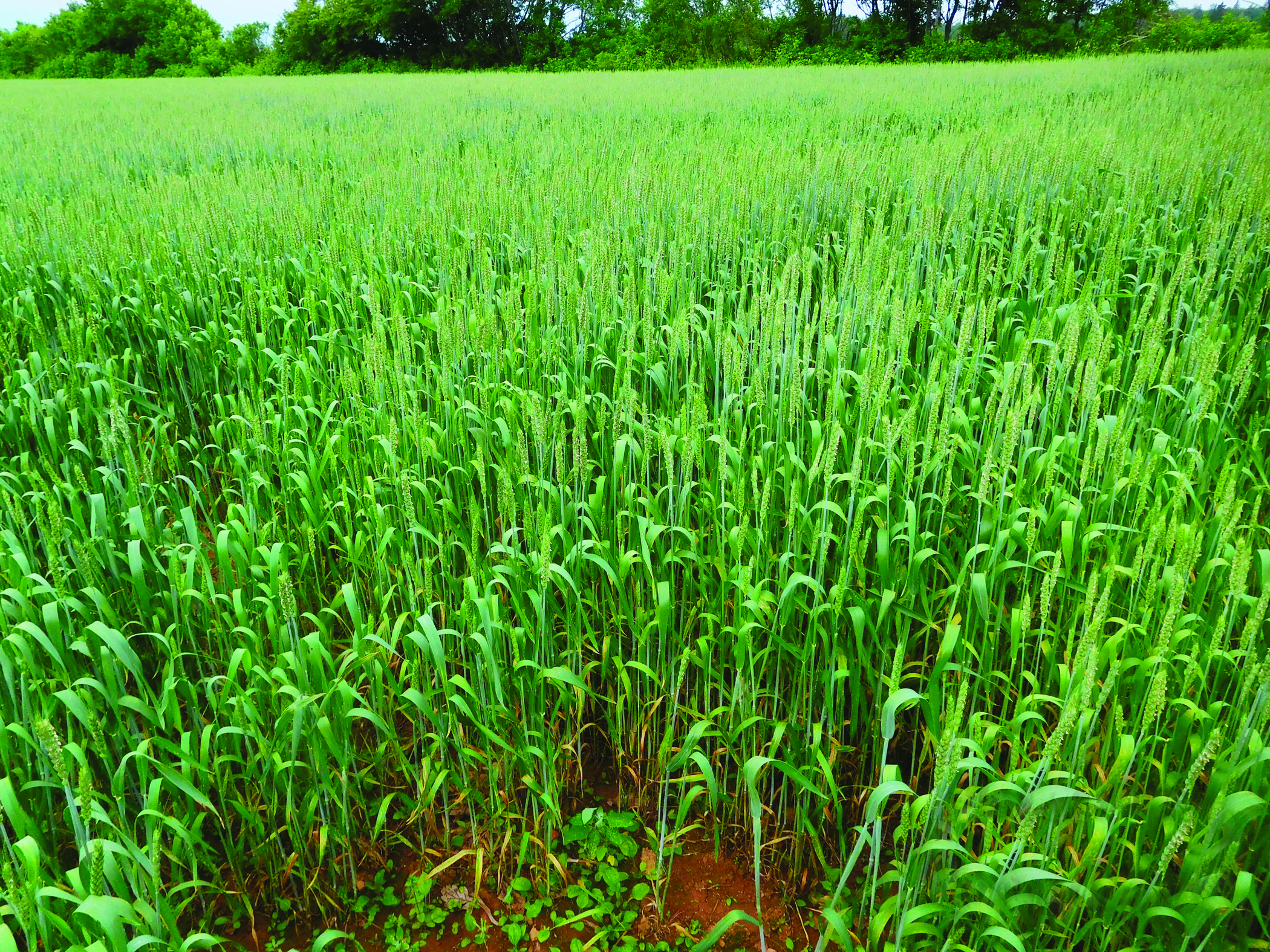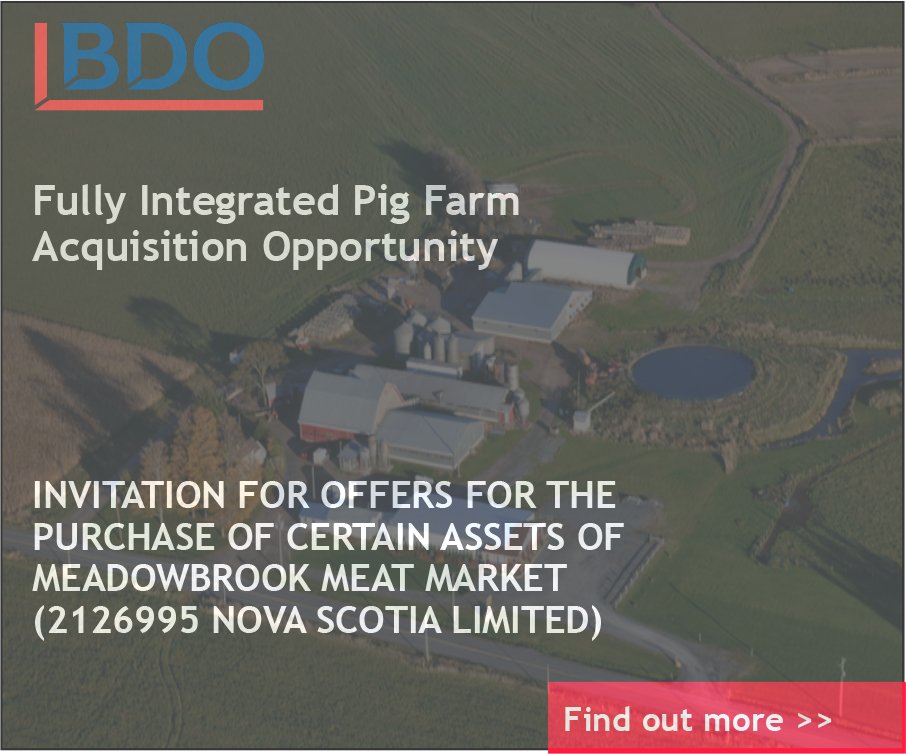P.E.I. farmers trying to reverse worrying declines in soil health
/Vernon and Bertha Campbell of Mull Na Beinne Farms in Grahams Road, P.E.I. Vernon said he’s seeing positive changes afoot as P.E.I. farmers work to overcome the Island’s soil health challenges. (Submitted photos)
Judith Nyiraneza
Winter wheat planted in a field after the potato harvest on the Ramsay farm in the Kensington area of Prince Edward Island shown on Oct. 24, 2016. Agriculture and Agri-Food Canada scientists collaborate with the Ramsays on research. Planting winter cereals following the potato harvest offers multiple benefits, such as protecting soil against erosion and scavenging residual nitrate. Winter cereals are also a potential source of revenue for farmers.
The same field of Winter wheat on the Ramsay farm shown the following year, on June 30, 2017.
by Emily Leeson
“The soil is your bank account,” said Vernon Campbell of Grahams Road, P.E.I., in a recent interview. “You can’t just keep taking out of it. You’ve got to put something back in.” Campbell is echoing what he believes Island farmers already know: soil health isn’t something to be taken for granted.
The most recent reports coming out of a 20-year study on P.E.I. soil health are showing a general decline in soil organic matter (SOM). The news is causing alarm, but for Campbell the headlines aren’t all that shocking. In fact, he said it’s a situation Island producers are already actively working to fix. The study is confirming the fact that a long-term strategy to sustain P.E.I. soil productivity is needed, and from Campbell’s perspective, researchers and local farmers are on the same page.
Campbell and his wife Bertha own Mull Na Beinne Farms, where they grow 600 acres of potatoes under contract for Cavendish Farms, produce finished beef for Atlantic Beef Products, and maintain a dairy herd of 85 cows. Their farm has maintained a diversity many Island farms have lost over the years – one element that is helping them overcome soil health challenges. However, even on less diverse farms, Campbell is seeing positive changes afoot.
“Certainly around this area, there has been a big change over the last five to 10 years in terms of things that we do in order to try and maintain soil organic matter,” said Campbell. “We do recognize the importance of it and we are taking tangible steps to improve it.”
Since 1998, the P.E.I. Department of Agriculture and Fisheries has been monitoring changes in SOM across the Island at 600 individual sites. By sampling one-third of the sites each year, researchers have been able to cover the entire Island every three years. This has given them a broad but also precise view of the trends occurring in Island soils.
Dr. Judith Nyiraneza, a research scientist with Agriculture and Agri-Food Canada based in Charlottetown, has been involved with the project since 2012. Nyiraneza has been analyzing the data coming in from those sites and lending her knowledge of soil science toward an interpretation of what exactly is happening underfoot on P.E.I.
Of the results eventually to come from this study, SOM is the first indicator for which the team has a good analysis. Sufficient levels of organic matter in the soil are essential to maintaining the land’s productivity potential. “It plays a big role in influencing soil quality,” said Nyiraneza. Good levels of SOM are associated with less compaction, increased water-holding capacity, increased water-infiltration rates, better drainage, better nutrient-holding ability, and good resilience to adverse environmental factors such as flood, drought, and erosion.
“It is also a good food source for beneficial organisms living in the soil,” added Nyiraneza. A good SOM level allows for a high abundance of diverse bacteria, fungi, algae, and other living organisms that actively recycle plant matter and improve the soil’s overall quality.
A general decline in SOM over time isn’t unexpected. In fact, according to Nyiraneza, it’s a parameter that naturally declines. However, that deterioration is intensified in agricultural areas. It’s an issue farmers are accustomed to dealing with. “It’s been happening ever since the plow went into the ground,” said Campbell. “It’s a matter of fact.”
However, a few factors make maintaining soil health on the Island a unique challenge. P.E.I.’s island climate and landscape, recent changes in the diversity of local agriculture, and a resulting decline in livestock operations in the province all contribute to the current situation.
THE ISLAND LANDSCAPE
P.E.I.’s red soil may be famously fertile, but the province’s humid climate and unique topography make erosion a significant issue for Island producers.
“In Nova Scotia or Quebec, you’d see a different type of soil, maybe high clay content where the particles of the soil are very bound together,” explained Nyiraneza. “On the Island, we have sandy loam – a very light soil and very susceptible to erosion.” Erosion is a particular concern during the growing season when high winds and intensive summer storms wreak havoc on the bare soil.
THE MIGHTY POTATO HARVEST
Alongside climate-induced erosion issues, traditional farming practices have taken their toll on the land. With more than 80,000 acres of potatoes grown on the Island each year, the main crop rotation system is potatoes and barley underseeded with Red clover.
Potato production aggressively disrupts the soil bed through frequent tilling, and soil erosion becomes a factor. “That just accelerates the soil organic matter breakdown,” said Nyiraneza.
In order to maintain and build up a quantity of good organic matter in the soil, plant residue and roots need to be allowed to decompose and contribute their nutrient base. That, along with the addition of manure or other carbon-rich waste, builds up soil reserves.
The 20-year study found that with most of the straw barley produced being exported from the fields, the amount of plant residue returned to the soil from the Red clover stage wasn’t sufficient to build up the SOM.
THE LOSS OF LIVESTOCK
A decline in livestock operations is also a major factor. That loss has meant a shortage of manure. “In P.E.I., we don’t have a big source of manure or compost,” said Nyiraneza. “Not every grower has access.” When added to the soil, manure increases the supply of nitrogen, phosphorous, potassium, and various other nutrients. It can go a long way in maintaining and building up soil productivity.
Campbell has watched this change in the industry unfold. “Before BSE hit, there was over 20,000 head of beef cattle being finished a year (on the Island),” he said. “Now we’re well below the 10,000-mark. Additionally, the hog industry has pretty much been decimated. There are still a few producers but certainly not what there was 10 or 15 years ago.”
That loss has had a ripple effect on P.E.I. agriculture. In addition to the manure issue, with less demand from the livestock industry for barley, barley acreage decreased and was replaced with soybeans and corn. “We used to grow more hay crops – perennial crops – and we’ve replaced them with annual crops,” said Nyiraneza. “Perennial crops are very important because they leave roots and decaying roots which improves the carbon inputs to the soil, plus the soil is not tilled every year.”
MOVING FORWARD
While the statistical analysis from the study is just starting to roll out, both Nyiraneza and Campbell are already seeing actions in place to rectify the situation.
Nyiraneza said “there are many initiatives” aimed at changing the tide of soil health on the Island. “If you drive around Summerside in fall, you are going to see some fields that are green in November or December,” she said. “And in the spring, you’re going to see some cereal crops coming up.”
That’s because many growers are adjusting their crop rotations and doing what they can to invest in their soil. Campbell thinks they’re already close to reversing the trends the study has revealed. He said the decline is already slowing down. “It’s all come from the reduction in tillage, planting winter cover crops, and adding hay and straw mulch over bare ground,” he said.
He’s seeing change on a large level – farmers taking on new crop rotations, switching out Red clover for alfalfa, whose deep taproots break up compaction and aid soil rejuvenation, and trying out new varieties unheard of in the area 10 years ago, things that may not have a cash value but that are good for soil health.
Campbell said he’s also seeing change on a small, more community-based level. “Years ago, we used to just give away the forages and straw that were grown in the potato rotation,” he said. “Now, people recognize the value of the crops and they want to put them back into the soil rather than give them away. Even the dairy and livestock industry has noticed a big change here in terms of the availability of forages and straw for bedding. They now have to pay well for them or provide manure as a trade.”
It’s an uphill climb for sure, but from Campbell’s perspective, P.E.I. farmers have already been en route for some time.
“Farmers are certainly recognizing the importance of soil health and soil organic matter and are doing a number of things to reverse this trend,” he said.













